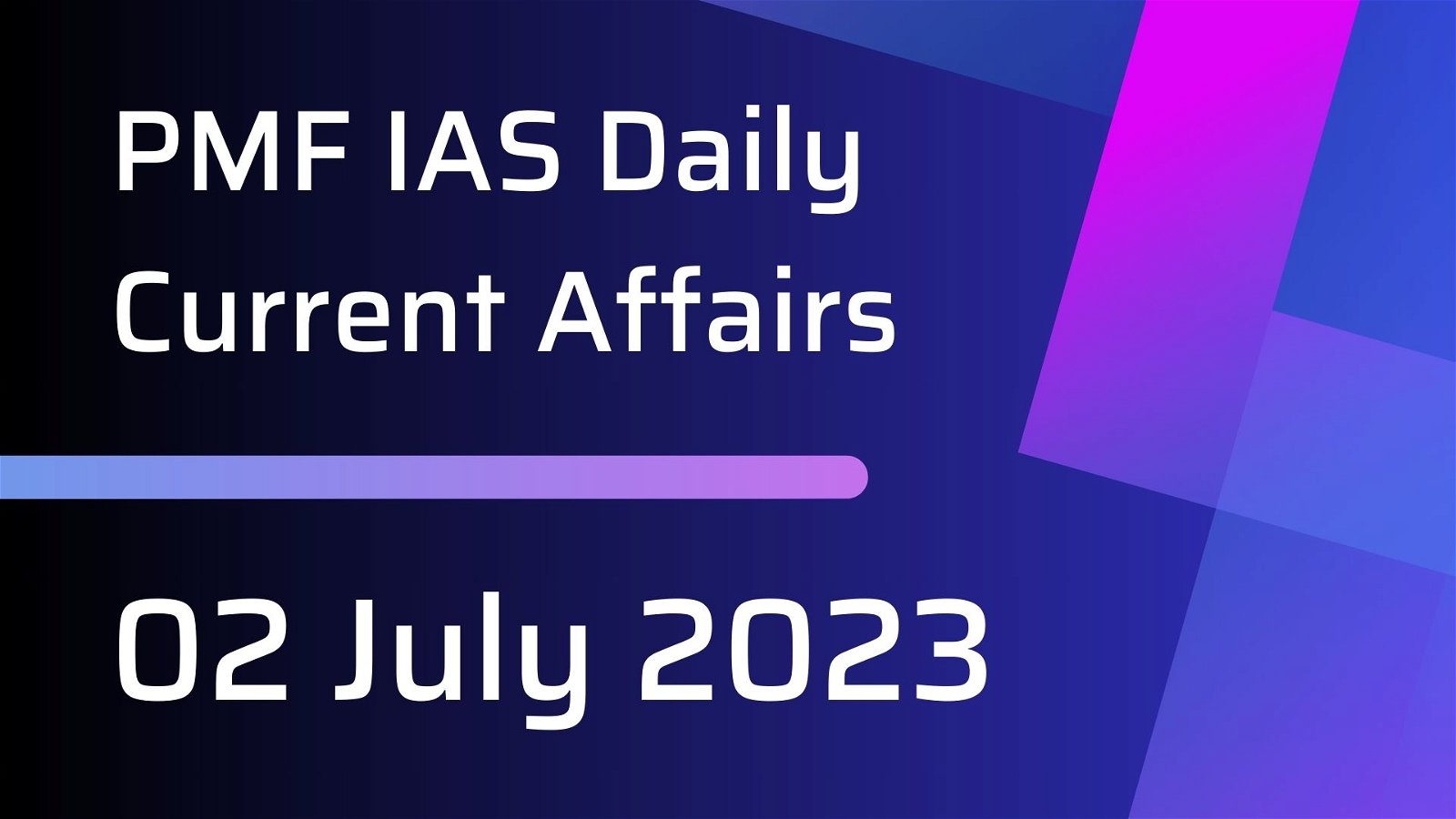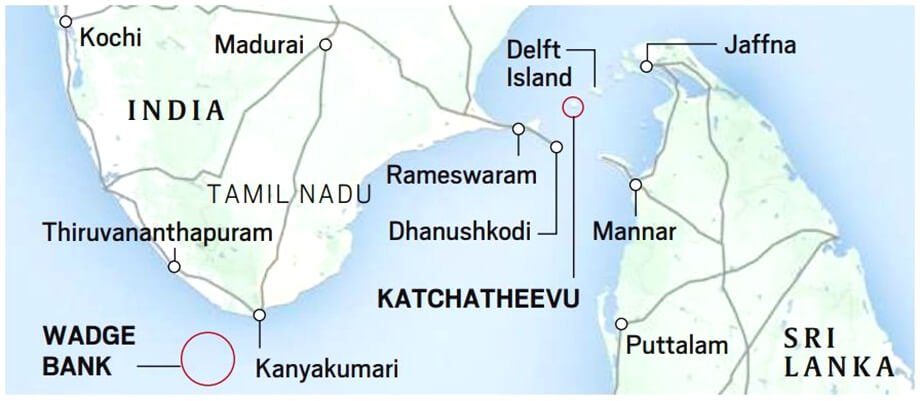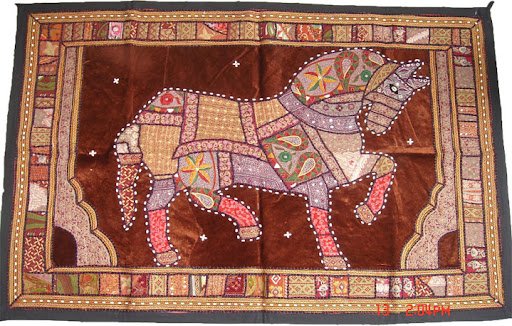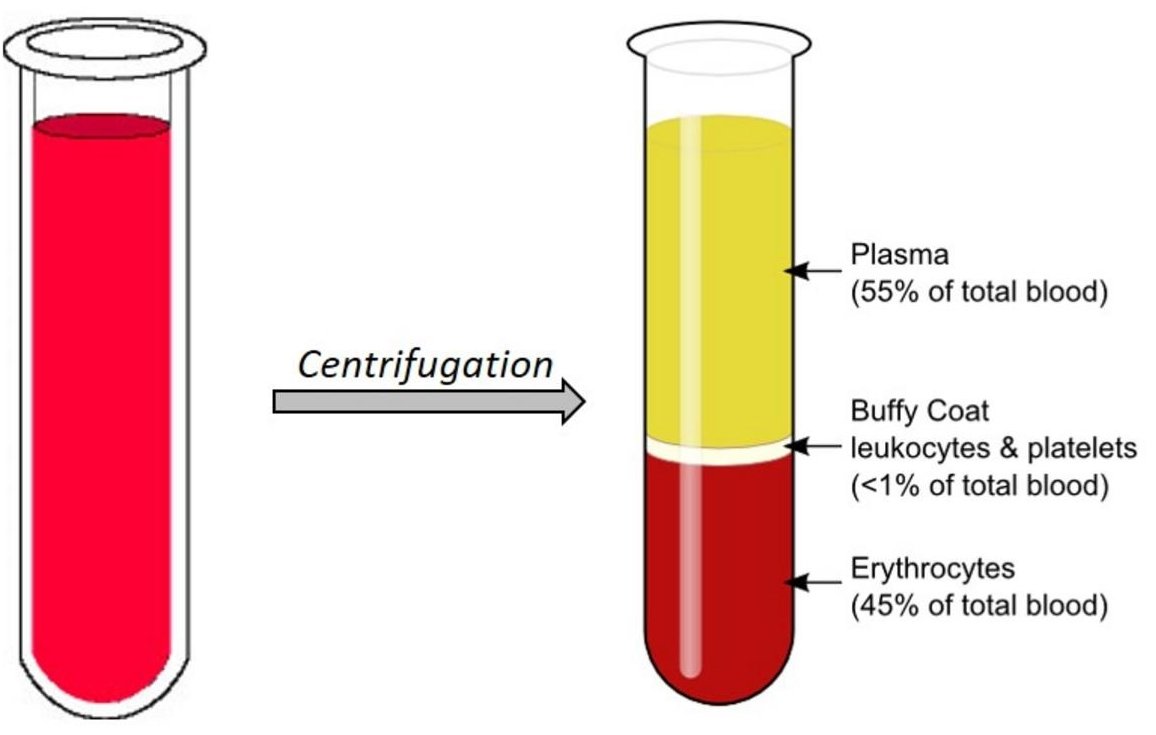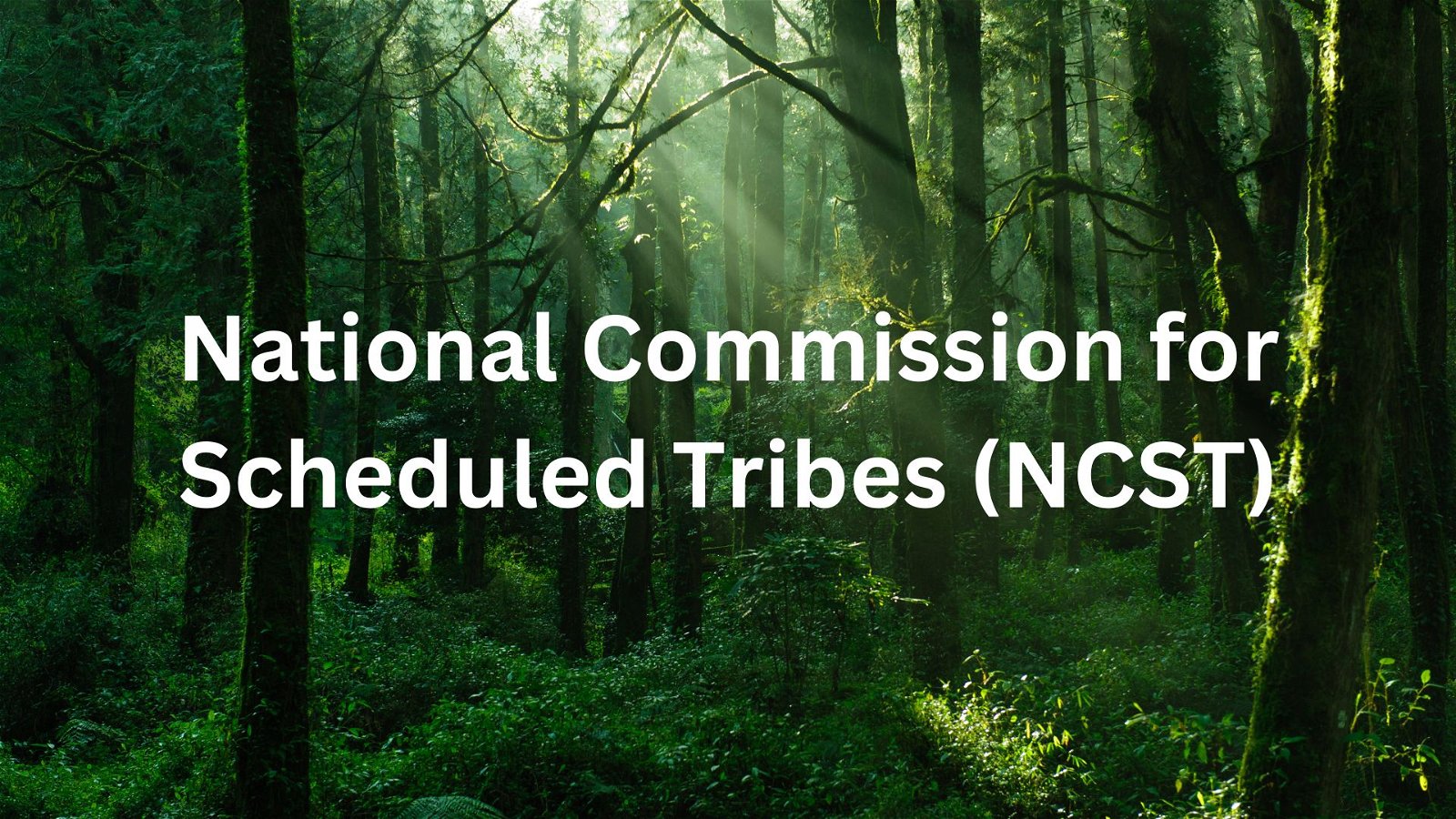
Current Affairs December 25-26, 2023: Indian Ocean Naval Symposium (IONS), Pesticide Poisoning, Colombo Security Conclave (CSC) 2023, Palna Programme, New Malaria Vaccine R21/MatrixM, Textile Industry, Zombie deer disease
Subscribers of "Current Affairs" course can Download Daily Current Affairs in PDF/DOC
Subscribe to Never Miss an Important Update! Assured Discounts on New Products!
Must Join PMF IAS Telegram Channel & PMF IAS History Telegram Channel
{GS2 – IR – ASEAN} India-ASEAN FTA Discussions
- Context (TH): India and the Association of South East Asian Nations (ASEAN) will begin negotiations to “modernise” the 15-year-old free trade agreement (FTA).
- ASEAN accounted for 11.3% of India’s global trade in 2022-23.
- The ASEAN India Trade in Goods Agreement (AITGA) is expected to be completed by 2025.

Need to Renegotiate FTA
- After the FTA, India’s trade deficit with ASEAN rose from $7.5 billion annually to $43.57 billion in FY23.
- Incidences of re-routing of goods by China through the ASEAN countries cause duty losses.
New Expected Provisions
- New elements of product-specific rules will make FTA more efficient.
- Rules of Origin will be incorporated to increase market access and to stop Chinese circumvention.
- Trade remedies will protect domestic industry against unfair trade practices or unforeseen surges in imports of goods.
- No new areas, such as environment, labour, MSMEs or gender, will be added to avoid new issues.
|
Types of Trade Agreements
- Trade Agreement: Cooperation between two or more countries for specific trade or investment terms.
Free Trade Agreement
- Two or more countries provide preferential trade terms, tariff concession, etc., to the partner country.
- It is more detailed than a Preferential Trade Agreement with a “Negative list” of excluded items.
Preferential Trade Agreement(PTA)
- Preferential right of entry is given by reducing duties on “Positive list” items.
- Tariffs may be reduced to zero for some products, even in a PTA.
- India signed a PTA with Afghanistan.
Comprehensive Economic Partnership Agreement (CEPA)
- Besides the above cooperation, CEPA also includes the regulatory aspect of trade.
- India has signed CEPAs with South Korea and Japan.
Comprehensive Economic Cooperation Agreement
- It covers negotiation on trade tariffs and “Tariff Rate Quota” only.
- It is not as comprehensive as CEPA.
- India has signed CECA with Malaysia.
Framework agreement
- Framework agreement primarily defines the scope and provisions of the potential deal.
Early Harvest Scheme
- It is a precursor to an FTA/CECA/CEPA between two trading partners.
- Before the conclusion of the actual FTA, countries identify certain products for tariff liberalisation.
{GS2 – IR – Groupings} Indian Ocean Naval Symposium (IONS)
- Context (IE): The 8th edition of the IONS Conclave of Chiefs was conducted by the Royal Thai Navy at Bangkok, Thailand.
- The Republic of Korea Navy was welcomed as the latest ‘Observer’ into the grouping.
- The IONS is a regional forum of Indian Ocean littoral states, launched by India in 2008.
- It is a voluntary initiative that seeks to increase maritime cooperation among navies of the littoral states of the Indian Ocean Region (IOR).
- Objective: To generate a flow of information between navies that would lead to common understanding and possibly cooperative solutions to future maritime problems and challenges.
- Under the IONS Charter of Business adopted in 2014, the forum has working groups on Humanitarian Assistance and Disaster Relief (HADR), Information Security and Interoperability (IS&I), and Maritime security (anti-piracy).
- 25 Member States, geographically divided into 4 subregions:
- South Asian Littorals: Bangladesh, India, Maldives, Pakistan, Seychelles, Sri Lanka, and the U.K.
- West Asian Littorals: Iran, Oman, Saudi Arabia, Qatar and UAE.
- East African Littorals: France, Kenya, Mauritius, Mozambique, South Africa, and Tanzania.
- South-East Asian and Australian Littorals: Australia, Indonesia, Malaysia, Myanmar, Singapore, Thailand, and Timor Leste.
- 9 Observer countries: China, Germany, Italy, Japan, Madagascar, the Netherlands, Russia, Spain, Korea (latest addition).
- The Chair rotates every 2 years.
- In 2018, IONS conducted its first-ever operational exercise called ‘IMMSAREX’, under the IONS Charter.
{GS2 – IR – Locations} Socotra Island: Geo-strategic Opportunity
- Context (FP): India is trying to partner with the U.A.E. for Socotra development.
- It is a Yemeni island in the Red Sea between the Gulf of Aden and the Arabian Sea, connecting Asia, Africa, and the Gulf.

- It is a UNESCO World Heritage Site with a vibrant and rare biodiversity.
- “Socotra” originated from “Dvipa – Sakhadara”, meaning ‘Island Abode of Bliss’ with significant ancient Indian trade links.
- Socotra got its governorate status in 2013 and has seen significant investments from the UAE.
Countering China
- The UAE’s growing presence through port development and modernisation is a necessary step to limit Beijing’s strategic outreach in the region.
- The India- Middle East-Europe Economic Corridor (IMEC) will also benefit.
Chinese footprints in the region:
|
{GS2 – IR – Regional Groupings} Colombo Security Conclave (CSC) 2023
- Context (TH): The 6th NSA meeting of the CSC discussed the Road Map 2024 to promote a safe, secure, and stable Indian Ocean.
- CSC was founded as a maritime security grouping of India, Sri Lanka and the Maldives in 2011.
- Other members: Mauritius (included in 5thedition); Observers: Bangladesh and Seychelles.
CSC in Geopolitics
- Maritime Security, exchange of information, cooperation between agencies, cybersecurity and environment protection, humanitarian aid, and disaster relief (HADR) are some areas of cooperation.
- As most members depend on China, India cannot utilise it as a counter-China group.
- Nationalistic domestic policies of members force them to dissociate, for e.g. Maldives’s absence(2023).
{GS2 – MoNRE – Initiatives} Renewable Energy
- Context (PIB | PIB): The Ministry of Natural and Renewable Energy (MoNRE) has taken several steps to smooth a transition to renewable energy and increase production.
Steps Taken by MoNRE
National Green Hydrogen Mission (NGHM)
- It aims to incentivise green hydrogen commercial production and position India as a net fuel exporter.
- Sub-schemes of NGHM:
- Strategic Interventions for Green Hydrogen Transition Programme (SIGHT): It will fund the domestic manufacturing of electrolyzers and the production of green hydrogen.
- Green Hydrogen Hubs: Regions capable of supporting large-scale production or utilisation of hydrogen will be developed as Green Hydrogen Hubs.
- Strategic Hydrogen Innovation Partnership (SHIP): It is a PPP framework for R&D.
|

Production Linked Incentive (PLI) Scheme for National Programme High-Efficiency Solar PV Modules
- National Programme on High Efficiency Solar PV Modules aims to build an ecosystem for manufacturing of high efficiency solar PV modules in India and reduce import dependence.
- PLI Scheme for National Programme on High-Efficiency Solar PV Modules is being implemented to achieve Giga Watt (GW)-scale manufacturing capacity in high-efficiency solar PV modules.
Production Linked Incentive (PLI) Scheme
|
Pradhan Mantri Kisan Urja Suraksha evam Utthaan Mahabhiyan (PM-KUSUM)
- The PM-KUSUM scheme subsidises farmers to install solar irrigation pumps for cultivation.
- Aim:
- Increase the income of farmers
- Provide sources for irrigation
- De-dieselising the agricultural sector
Grid Connected Solar Rooftop Programme
- The scheme aims to generate solar power by installing solar panels on the roofs of houses.
- Under the Phase II, a consumer gets a subsidy of 40% for 1-3Kw and 20% for above 3Kw capacity.
CPSU Scheme Phase II (Government Producer Scheme)
- The scheme aims to set up grid-connected Solar Photovoltaic (PV) Power Projects by Central and State PSUs and government organisations.
- The power produced is self-used or used by Government/ Government entities directly or through Distribution Companies (DISCOMs).
Solar Parks and Ultra Solar Power Projects
- A solar park is a large land area with shared infrastructure such as transmission facilities, roads, water, drainage, communication networks, and necessary statutory clearances.
- The scheme aimed to establish a minimum of 25 Solar Parks and Ultra Mega Solar Power Projects.
- The scheme’s capacity was enhanced from 20,000 MW to 40,000 MW.
- These parks are proposed to be set up by 2025-26.
Green Energy Corridor (GEC) Scheme
- GEC was launched to synchronise electricity produced from renewable sources with conventional power stations in the grid.
- It comprises both Inter State Transmission System (ISTS) and Intra State Transmission System (InSTS), along with the setting up of a Renewable Energy Management Centre (REMC).
Green Term Ahead Market (GTAM)
- GTAM platform provides access to the pan-India market of renewable energy (RE).
- The benefits are:
- Allow additional avenues to the RE generators for the sale of RE
- Enable Obligated entities to procure renewable power at competitive prices to meet their Renewable Purchase Obligations (RPO)
- Provide a platform for environmentally conscious consumers and utilities to buy green power.
Renewable Purchase Obligation (RPO)
- The Electricity Act 2003 (EA 2003) and the National Tariff Policy 2006 mandates RPO.
- RPOs are categorised as Solar and Non-Solar RPOs.
- RPO mandates obligated entities to procure a specific percentage of electricity from Renewable Energy sources relative to their total consumption.
- Obligated Entities include Discoms, Open Access Consumers and Captive power producers.
National Bioenergy Programme
- This programme provides Central Financial Assistance (CFA) for power generation, Biogas/BioCNG generation, and briquette/pellet manufacturing, wherein biomass is one of the major feedstock materials, which shall primarily be sourced from rural areas.
- It comprises of the following sub-schemes:
- Waste to Energy Programme: To support the setting up large Biogas, BioCNG, and Power plants.
- Biomass Programme: To support setting up pellets and briquettes for biomass-based power generation projects.
- Biogas Programme: To support setting up family- and medium-sized biogas in rural areas.
Pumped Storage Projects
- Pumped Storage Hydropower (PSH) is a hydroelectricity storage system.
- Recognising their significant role in grid stabilisation and addressing peak power demand, guidelines have been formulated to promote Pumped Storage Projects (PSPs)
- MoNRE seeks to promote PSPs across the country with proactive support of the State Governments.
Other Steps Taken
- Permitting Foreign Direct Investment (FDI) up to 100% under the automatic route.
- Waiver of Inter-State Transmission System (ISTS) charges for inter-state sale of solar and wind power for projects to be commissioned by 30th June 2025.
Benefits of these Steps Taken
- Help achieve net-zero target by 2070: It is one of the Panchamrit presented by India in COP26.
- Justify India’s position in COP28: India has refrained from signing the pledge to triple the world’s renewable energy capacity by 2030 because it wanted a smooth transition to renewables rather than a drastic one. These steps will help to achieve it.
- Solve infrastructure issues: e.g., Green Energy Corridor
- Address grid stabilisation issue: Renewable energy like wind, solar, and hydro are seasonally available, so they cannot be trusted as a constant energy source. However, steps like Pumped Storage Projects help store this energy and regulate its use.
- Attract private players: e.g. PLI Scheme for National Programme High-Efficiency Solar PV Modules
- Lower carbon footprint: Around 57% of the electricity is fossil fuel-based.
- Generate green employment
{GS2 – MoWCD – Schemes} Palna Programme
- Context (PIB): GoI aims to establish 17000 Crèches across the country as part of the Palna programme.
- The erstwhile National Creche Scheme has been reorganized and renamed as Palna Scheme under the sub-scheme ‘Samarthya’ of ‘Mission Shakti’.
- Under Palna Scheme, the provision of Anganwadi cum Creches has been introduced.
- Further, the crèches which were running under the erstwhile National Creche Scheme have been included as Stand Alone Creches.
- Nodal Ministry: Ministry of Women & Child Development.
- Implementation: By State Governments. The State Governments could implement the Scheme through other suitable voluntary/ non-governmental organizations.
|
Target Group
- The scheme focuses on children of 6 months-6 years of working women in rural and urban areas who are employed for a minimum period of 15 days in a month, or six months in a year.
Objectives
- To provide day-care facilities for children (6 months to 6 years) of working mothers in the community.
- To improve the nutrition and health status of children.
- To promote physical, cognitive, social and emotional development (Holistic Development) of children.
- To educate and empower parents /caregivers for better childcare.
Services Provided
- Daycare facilities including sleeping facilities.
- Early stimulation for children below 3 years
- Pre-school education for 3 to 6-year-old children.
- Supplementary nutrition.
- Growth monitoring.
- Health check-up and immunization.
Financial Assistance
- A Recurring Grant of Rs.152600/- per annum is provided for a crèche of 25 children.
- A non-recurring grant for a period of five years – Rs 10,000/- once in the beginning of every new crèche and a subsequent grant of Rs. 5000/- at an interval of five years towards replacement/purchase of equipment/ furniture, water filter, etc.
Mission Shakti
Sub-schemes of Sambal
Sub-schemes of Samarthya
|
{GS2 – Social Sector – Health – Diseases} New Malaria Vaccine R21/MatrixM
- Context (TH | DTE): WHO added R21/Matrix-M malaria vaccine to its list of prequalified vaccines.
- The vaccine is developed by Oxford University and manufactured by Serum Institute of India.
- It is the world’s second WHO-recommended malaria vaccine, after RTS,S/AS 01.
- The new vaccine will be sold under the brand Mosquirix.
- This vaccine is meant for children under the age of five years.
- It has three primary doses and a booster shot after a year.
- It is specific to Plasmodium falciparum. So, it cannot be used to prevent infections caused by other malaria parasites like Plasmodium vivax.
- It uses the same adjuvant, Matrix M, as the COVID-19 vaccine, Novavax, a version of which was also rolled out by SII.
|
Benefits of the R21 Malaria Vaccine
- High efficacy: It has an efficacy of 75% in areas with seasonal prevalence and 68% in areas where the disease circulates all year round.
- Low cost: It is about half the price of RTS,S, the only other malaria vaccine available.
- Mass production: Serum Institute of India has the potential to mass-produce it on a large scale.
Why Prequalification by WHO is Important?
- WHO prequalification is the prerequisite for UNICEF procurement and funding support for Gavi deployment.
- As part of prequalification, WHO assesses vaccines using international standards to ensure they are safe, effective, and manufactured to global standards.
- It addresses the specific requirements of national immunisation programmes, including vaccine characteristics like potency, thermostability, presentation, labelling, and shipping conditions.
GAVI, The Vaccine Alliance
- GAVI was established as a public-private Global Health Partnership in 2000.
- Goal: Create equal access to new and underused vaccines for children in the world’s poorest countries.
- Aims:
- Accelerating access to vaccines
- Strengthening countries’ health and immunisation systems
- Introducing innovative new immunisation technology
- The permanent seats are held by UNICEF, WHO, the World Bank and the Bill & Melinda Gates Foundation. Representatives of other Gavi partners serve on a time-limited basis.
Details on Malaria and Malaria in India > Malaria, New Malaria Vaccine R21/MatrixM – PMF IAS
{GS3 – Envi – Biodiversity Loss} Man-Animal Conflict
- Context (DTE): Carcasses of bonnet macaque monkeys in Karnataka have highlighted the human-monkey conflict in the region.
Reasons of Human-Monkey Conflict
- Increase in population: Bonnet macaques are growing in population and there was not enough food available in their resident forests.
- Human encroachment: Human habitations and farming are extending into the forest areas in Kudremukh National Park (NP), Biligirirangana Betta Wildlife Sanctuary, Nagarhole NP, Bhimgadh NP, etc. of the Western Ghats.
Bonnet Macaque (Macaca radiata)
- Bonnet macaque (or zati) is a macaque endemic to southern India.
- Distribution: Entire region south of river Godavari and Tapti.
- Habitat: Found in all forest types including plantations, agricultural lands, and urban areas.
- Threats: Habitat loss and hunting.
- Conservation status: IUCN: VU | CITES: Appendix II | WPA: Schedule II

{GS3 – IE – Agriculture} Pesticide Poisoning
- Context (TH): Pesticide poisoning cases in Maharashtra are in frequent news.
- Pesticides are substances intended for pest control in agriculture, food production, and animal care.
- Health impacts include nausea, vision impairment, photosensitivity, loss of stamina, and even death.
- No antidote is available in the market for most pesticide poisoning cases.
- Examples of Hazardous pesticides and insecticides: Profenophos, Fipronil, Acephate, Difenthiron( in pesticide “Polo”), Ekalux and Monocrotophos.
Status of pesticides in India
- India ranks 2nd in pesticide production and is the 5th largest exporter globally.
- Maharashtra, especially Vidarbha, utilises 50% of India’s pesticides, notably in cotton farming.
Regulation of Pesticides
- Pesticide Registration is carried out by the Directorate of Plant Protection, Quarantine & Storage (DPPQS) under the Ministry of Agriculture and Farmers Welfare.
- Insecticides Act(1968) governs the import, manufacture, sale, and use of insecticides & pesticides.
- Central Insecticides Board & Registration Committee (CIBRC) under the Ministry of Agriculture regulates insecticide usage, manufacturing, import, and sale.
Issues in pesticide regulation
- Despite international bans, India permits at least 116 hazardous pesticides, posing health risks.
- Attempts to ban certain pesticides resulted in reversals, with limited bans enforced in 2023.
-
Committees suggesting bans:
- Anupam Verma Committee, SK Malhotra Committee, Registration Committee and S K Khurana Committee (2020) recommended banning some 27 pesticides.
Pesticides in the tropic levels
- Bioaccumulation is the gradual accumulation of pollutants & chemicals in an organism.
- Biomagnification refers to a progressive increase in concentration at each tropical level.
Way Forward
- Integrated Pest Management (IPM) techniques and bio-pesticides (environmentally friendly) are being used to counter pests.
- Expensive Molecular target-specific low-toxicity pesticides are also safer alternatives.
- Dr. Punjabrao Deshmukh Organic Agriculture Mission (2018) was started in Maharashtra to promote organic farming.
{GS3 – IE – Industry} Textile Industry
- Context (TH): The Indian textile Industry has been reeling under insurmountable challenges adversely impacting the industry and the manufacturers.
Status of India’s Textile Industry
- The sector contributes 4% to the global trade in textiles and apparel, 2% to the GDP (approx. $60 billion), and constitutes 7% of industry output in terms of value (2023).
- Employment: It provides direct employment to around 35 million people.
- The industry is expected to grow at 10% CAGR from 2019-20 to reach US$ 190 billion by 2025-26.
- India’s share in global trade in textiles and apparel: 4%.
- India is the world’s second-largest producer of silk, accounting for 95% of all hand-woven cloth.
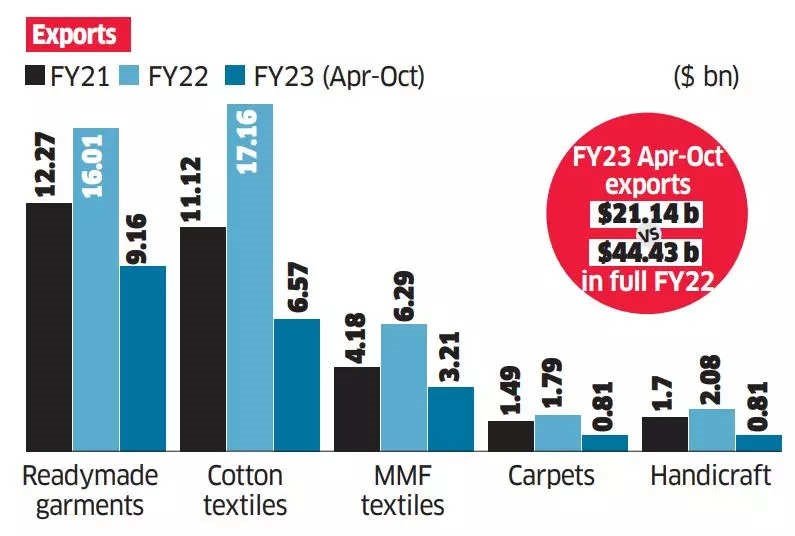
Growth Drivers of Textile Industry
- Rising demand and per capita consumption of fibre: India’s exports of textiles and apparel are expected to grow at a CAGR of 11% by 2025-26.
- Production levels: India is the largest cotton producer (23%) in the world and has the highest area under cotton cultivation (39% of the world area).
- Competitive advantage in terms of skilled manpower and cost of production, relative to major textile producers.
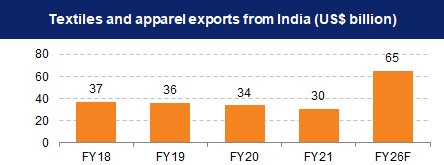 Policy support: 100% FDI (automatic route) allowed in textiles, Production-Linked Incentive (PLI) Scheme in Man-made fibre and technical textiles.
Policy support: 100% FDI (automatic route) allowed in textiles, Production-Linked Incentive (PLI) Scheme in Man-made fibre and technical textiles.
Significance of Textile Industry
- Economic contribution: The sector contributes about 14% of manufacturing value-addition, and accounts for around one-third of country’s gross export earnings.
- Employment potential: The Indian textile and garment industry is the second-largest employer in the country after agriculture, employing around 4.5 Cr workers.
- Cultural heritage and Identity: Traditional textile techniques, designs, and motifs are often passed down through generations, representing a nation’s cultural heritage.
- Export Earnings: The share of textile, apparel, and handicrafts in India’s total exports was 11.4% in 2020-21. Exports were the highest ever in FY 2021-22, crossing US$ 44 Bn.
Challenges with Textile Sector
- Global competition and shock: India’s global market share post-2014 has declined from 5.9% to 4.6% in 2020 (textile sector) and from 3.9% to 2.9 % (apparel sector).
- Underutilization: The industry operating at 70% capacity due to import pressure with a year-on-year decline in the export of man-made yarn, fabrics, and made-ups.
- Financial constraints: As per the Confederation of Indian Textile Industry, 58% of textile and clothing exporters faced challenges in accessing credit, impacting their ability to invest and expand operations.
- Technological advancement: The processing sector is largely decentralized with low levels of automation leading to inconsistency in production and meeting quality standards.
- Price competitiveness: Rising cheap imports of man-made fabrics primarily from China, undervaluation on imports, causing local spinners, knitters, weavers, and processors to struggle in offering competitive prices.
- Other issues: Increased compliance costs due to GST, unorganized nature of spinning mills, expensive local cotton, and shortage of skilled workers, particularly in areas like design, technical expertise, etc.
Way Forward
- Promote innovation: Establish design centers, incubation facilities, and platforms for collaboration between designers, weavers, and manufacturers.
- Market Diversification by diversifying export destinations to reduce dependence on a few countries and expand market reach.
- Cluster Development: Facilitate industry associations, trade bodies, and government-industry partnerships to address common challenges and advocate for the sector’s interests.
- Promote compliance with international standards for social and environmental sustainability to enhance market competitiveness and access to global markets.
- Simplify Tax Structure by providing clarity and consistency in tax laws and regulations, ensuring a smooth transition to new tax systems like the GST.
- Trade Policy Support: Abolition of anti-dumping duty on Purified Terephthalic Acid (PTA), which is a critical input for man-made textile fibre and yarns.
{Prelims – Sci – AI} Watsonx.ai
- Context (IE): At the recent COP28 (UAE), NASA and IBM announced an Artificial Intelligence (AI) tool called watsonx.ai that will do weather forecasting more accurately.
- It will be available on the open-source AI platform Hugging Space.
- Watsonx.ai enables users to monitor Earth from space, assessing past environmental changes and providing predictions for the future.
{Prelims – Sci – Bio – Diseases} Zombie deer disease
- Context (IT): The first known case of ‘zombie deer disease’ has been identified in the US Yellowstone National Park.
- Chronic Wasting Disease (CWD) or ‘zombie deer disease’ is a contagious and lethal ailment affecting cervids, including deer, elk, caribou, reindeer, and moose.
- It is caused by a misshapen protein (prion) that accumulates in the brain and other tissues.
- Transmission:
- Direct animal-to-animal contact
- Indirectly via contact with infectious, environmental particles, like faeces, soil, or vegetation.
- Despite no evidence of CWD infecting humans or domestic animals, there are potential risks.




![PMF IAS Environment for UPSC 2022-23 [paperback] PMF IAS [Nov 30, 2021]…](https://pmfias.b-cdn.net/wp-content/uploads/2024/04/pmfiasenvironmentforupsc2022-23paperbackpmfiasnov302021.jpg)
 Policy support:
Policy support: